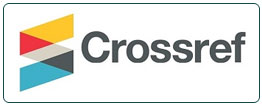EVALUATION OF THE IMPACT OF SENNA ALATA ON LIPID PROFILE LEVELS IN ALLOXAN-INDUCED DIABETIC WISTAR RATS
 Abstract views: 44
/
Abstract views: 44
/  PDF downloads: 18
PDF downloads: 18
DOI:
https://doi.org/10.61705/1aq4w740Keywords:
Senna alata, total cholesterol, high-density lipoproteins, low-density lipoproteinsAbstract
Diabetes is a metabolic condition where the body either fails to produce sufficient insulin or becomes resistant to its effects, resulting in high blood sugar levels. This disorder can lead to serious health problems, including stroke, kidney failure, blindness, amputations, cardiovascular diseases, and birth defects. The aim of this research was to investigate the impact of Senna alata on serum levels of total cholesterol, high-density lipoprotein (HDL), and low-density lipoprotein (LDL) in Wistar rats with diabetes induced by alloxan.
The study involved 50 albino rats, each weighing between 150 and 200 grams, and all were treated following ethical guidelines for animal research. The rats were given standard food and water and were divided into two main groups: a control group and an experimental group. The experimental group was further subdivided into five smaller groups, each consisting of 10 rats (Groups A-E). Group A served as the control, while Group B received 5.17 mg/kg of Senna alata aqueous extract, Group C received 15.40 mg/kg, Group D received 27.87 mg/kg, and Group E was administered 0.5 ml of distilled water without the extract. At the end of the treatment period, the rats were euthanized, and blood samples were taken for analysis of total cholesterol, HDL, and LDL levels using established laboratory techniques.
The results indicated both the mean and standard deviation values for the control and experimental groups. In the control group, total cholesterol (TC) was 79.85±31.61 mg/dl, while the experimental group showed a value of 87.46±39.99 mg/dl. Triglycerides (TG) in the control group were 56.57±19.37 mg/dl, compared to 105.53±73.42 mg/dl in the experimental group. LDL levels in the control group were 35.71±28.58 mg/dl, and in the experimental group, they were 57.46±36.07 mg/dl. No significant difference (p≥0.05) was found in the total cholesterol and LDL levels between the two groups. However, a statistically significant difference (p≤0.05) was observed in the triglyceride levels.
Conclusively, this study indicates that S. alata extracts do not exhibit anti-lipemic properties and do not reverse biochemical disruptions in diabetic rats. Therefore, S. alata is not suitable for preventing or treating hyperlipidemia.
References
Abdelhai Sonbol, A. A., Hussien, H. I., Ibraheem, H. A., & Badawy, A. A. (2023). Evaluation of Lipid Profile in Patients with Hepatitis C Virus Related Liver Cirrhosis. Afro-Egyptian Journal of Infectious and Endemic Diseases, 13(1), 35-42.
Alpdemir, M., & Alpdemir, M. F. (2021). Comparison of Martin and Friedewald equation for estimated LDL-C in adults. Turk Kardiyoloji Dernegi Arsivi, 49(8), 619.
Bakir, M. B., Salama, M. A., Refaat, R., Ali, M. A., Khalifa, E. A., & Kamel, M. A. (2019). Evaluating the therapeutic potential of one-carbon donors in nonalcoholic fatty liver disease. European Journal of Pharmacology, 847, 72-82.
Candelli, M., Franza, L., Pignataro, G., Ojetti, V., Covino, M., Piccioni, A., ... & Franceschi, F. (2021). Interaction between lipopolysaccharide and gut microbiota in inflammatory bowel diseases. International journal of molecular sciences, 22(12), 6242.
Chin, A. W., Chu, J. T., Perera, M. R., Hui, K. P., Yen, H. L., Chan, M. C., ... & Poon, L. L. (2020). Stability of SARS-CoV-2 in different environmental conditions. The Lancet Microbe, 1(1), e10.
Dineshbabu, S., & Brintha, S. R. (2022). Gcms Analysis And Antioxidant Activity Of Various Extracts Of Plant, Typhonium Divaricatum. Journal of Population Therapeutics and Clinical Pharmacology, 29(04), 1112-1122.
Elebiyo, T. C., Oluba, O. M., & Adeyemi, O. S. (2023). Anti-malarial and haematological evaluation of the ethanolic, ethyl acetate and aqueous fractions of Chromolaena odorata. BMC Complementary Medicine and Therapies, 23(1), 402.
Fernández‐Cidón, B., Candás‐Estébanez, B., Ribalta, J., Rock, E., Guardiola‐Guionnet, M., Amigó, N., ... & Pintó‐Sala, X. (2020). Precipitated sdLDL: An easy method to estimate LDL particle size. Journal of Clinical Laboratory Analysis, 34(7), e23282.
Kalyango, Y., Hanusch, F., Ramaprasad, J., Skjerdal, T., Hasim, M. S., Muchtar, N., ... & Kamara, S. B. (2020). Journalists’ development journalism role perceptions: Select countries in Southeast Asia, South Asia, and sub-Saharan Africa. In Comparing Journalistic Cultures (pp. 51-69). Routledge.
Kottaisamy, C. P. D., Raj, D. S., Prasanth Kumar, V., & Sankaran, U. (2021). Experimental animal models for diabetes and its related complications—a review. Laboratory animal research, 37(1), 23.
Liu, N., Miao, S., & Qin, L. (2020). Screening and application of lactic acid bacteria and yeasts with l‐lactic acid‐producing and antioxidant capacity in traditional fermented rice acid. Food Science & Nutrition, 8(11), 6095-6111.
MacArthur Clark, J. A., & Sun, D. (2020). Guidelines for the ethical review of laboratory animal welfare People’s Republic of China National Standard GB/T 35892‐2018 [Issued 6 February 2018 Effective from 1 September 2018]. Animal models and experimental medicine, 3(1), 103-113.
Magalhães, R. F., Velho, P. E. N. F., Secamilli, E. N., Buffo, T. H., Serrano, J. Y. M., Costa, T. A. S., & Stolf, H. O. (2024). Dermatological Disorders Associated with Sports. In Sideline Management in Sports (pp. 347-375). Cham: Springer International Publishing.
Mundia, C. W., Secchi, S., Akamani, K., & Wang, G. (2019). A regional comparison of factors affecting global sorghum production: The case of North America, Asia and Africa’s Sahel. Sustainability, 11(7), 2135.
Nobossé, P., Fombang, E. N., & Mbofung, C. M. (2018). Effects of age and extraction solvent on phytochemical content and antioxidant activity of fresh Moringa oleifera L. leaves. Food science & nutrition, 6(8), 2188-2198.
Park, S. Y., & Kim, C. G. (2019). Biodegradation of micro-polyethylene particles by bacterial colonization of a mixed microbial consortium isolated from a landfill site. Chemosphere, 222, 527-533.
Patel, J. A., Nielsen, F. B. H., Badiani, A. A., Assi, S., Unadkat, V. A., Patel, B., ... & Wardle, H. (2020). Poverty, inequality and COVID-19: the forgotten vulnerable. Public health, 183, 110.
Peng, K. Y., Watt, M. J., Rensen, S., Greve, J. W., Huynh, K., Jayawardana, K. S., ... & Meex, R. C. (2018). Mitochondrial dysfunction-related lipid changes occur in nonalcoholic fatty liver disease progression. Journal of lipid research, 59(10), 1977-1986.
Riaz, G., & Chopra, R. (2018). A review on phytochemistry and therapeutic uses of Hibiscus sabdariffa L. Biomedicine & Pharmacotherapy, 102, 575-586.
Seddon, N., Smith, A., Smith, P., Key, I., Chausson, A., Girardin, C., ... & Turner, B. (2021). Getting the message right on nature‐based solutions to climate change. Global change biology, 27(8), 1518-1546.
Tartor, Y. H., El-Neshwy, W. M., Merwad, A. M., Abo El-Maati, M. F., Mohamed, R. E., Dahshan, H. M., & Mahmoud, H. I. (2020). Ringworm in calves: risk factors, improved molecular diagnosis, and therapeutic efficacy of an Aloe vera gel extract. BMC veterinary research, 16, 1-15.
Tartor, Y. H., El-Neshwy, W. M., Merwad, A. M., Abo El-Maati, M. F., Mohamed, R. E., Dahshan, H. M., & Mahmoud, H. I. (2020). Ringworm in calves: risk factors, improved molecular diagnosis, and therapeutic efficacy of an Aloe vera gel extract. BMC veterinary research, 16, 1-15.
Uwazie, J. N., Yakubu, M. T., Ashafa, A. O. T., & Ajiboye, T. O. (2020). Identification and characterization of anti-diabetic principle in Senna alata (Linn.) flower using alloxan-induced diabetic male Wistar rats. Journal of ethnopharmacology, 261, 112997.
Zaheer, S., Shah, N., Maqbool, S. A., & Soomro, N. M. (2019). Estimates of past and future time trends in age-specific breast cancer incidence among women in Karachi, Pakistan: 2004–2025. BMC public health, 19, 1-9.
Yaribeygi, H., Maleki, M., Reiner, Ž.,Jamialahmadi, T., &Sahebkar, A. (2022). Mechanistic view on the effects of SGLT2 inhibitors on lipid metabolism in diabetic milieu. Journal of Clinical Medicine, 11(21), 6544.
ZadehGharaboghaz, M. N., Farahpour, M. R., &Saghaie, S. (2020). Topical co-administration of Teucriumpoliumhydroethanolic extract and Aloe vera gel triggered wound healing by accelerating cell proliferation in diabetic mouse model. Biomedicine & Pharmacotherapy, 127, 110189.
Additional Files
Published
Issue
Section
License
Copyright (c) 2024 International Journal of Medical Research

This work is licensed under a Creative Commons Attribution 4.0 International License.
All papers should be submitted electronically. All submitted manuscripts must be original work that is not under submission at another journal or under consideration for publication in another form, such as a monograph or chapter of a book. Authors of submitted papers are obligated not to submit their paper for publication elsewhere until an editorial decision is rendered on their submission. Further, authors of accepted papers are prohibited from publishing the results in other publications that appear before the paper is published in the Journal unless they receive approval for doing so from the Editor-In-Chief.
IJMR open access articles are licensed under a Creative Commons Attribution-ShareAlike 4.0 International License. This license lets the audience to give appropriate credit, provide a link to the license, and indicate if changes were made and if they remix, transform, or build upon the material, they must distribute contributions under the same license as the original.




